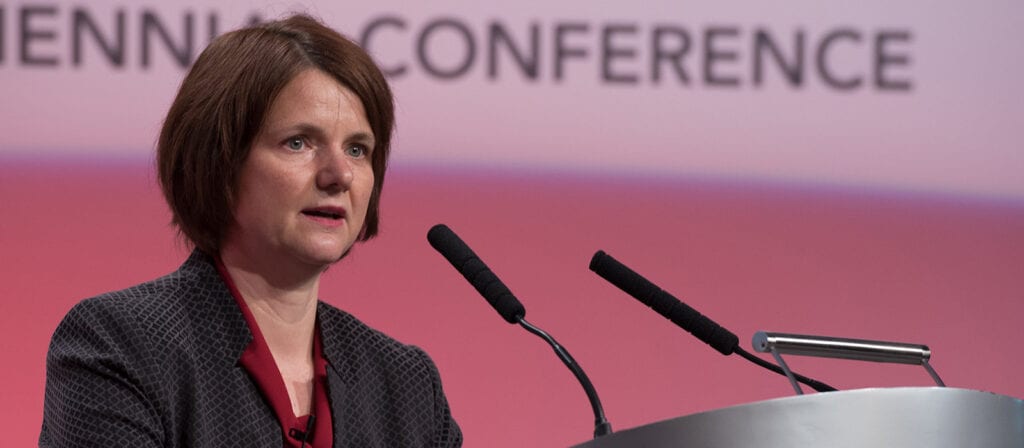Ben Telfer:
Hello everyone and welcome to today’s ICMIF webinar, which is Episode 12 in our “The Digital Mutual” webinar series. Tonight we will hear the case study from Turkey from Anadolu Sigorta, and their case study is entitled Detecting Organized Fraud via Social Network Analysis.
I’m very pleased to introduce from Anadolu Sigorta Vedat Gunes, who is lead data architect and Emin Ayik, who is head of claims management. Vedat, Emin, very pleased for you to join us today, and Emin, I think I’m handing over to you first.
Emin Ayik:
Thank you very much Ben for the introduction. I would like to say welcome to all attendees, and hope that we will have a good presentation. We will be glad to answer your questions about the content, so I’m starting.
Just a brief introduction of ourselves. I start with myself. I have 16 years of experience in insurance and before in transportation industry. I have taken responsibility in budget and planning units internal audits and claims management functions. Currently, I’m responsible from the claims management function of Anadolu Sigorta, including bodily injury claims throughout network management, claim analytics, and some other related functions.
Here, we have our contact information. Please feel free to contact us with any of your questions.
Vedat Gunes:
Hi, everybody, welcome to our presentation today. I’m Vedat Gunes. Not only in the insurance sector, I have 17 years of experience on data analytics, and data related topics. As Emin said, feel free to contact with us about the presentation or further information about platform that we will present. Hope we will have a good presentation, and share good information that will be useful for you.
Emin Ayik:
We start with a brief introduction of our company. Our company Anadolu Sigorta is the first national insurance company founded by Mustafa Kemal in 1925. We are approaching our 100th anniversary hopefully. We belong to Turkish İşbank’s financial group, which is the biggest private financial institution in Turkey. We have a very widespread distribution channel, including 4,500 agencies, including exclusive agencies, bank branches, and other agencies.
We have approximately around eight billion Turkish Liras of gross return premium, the revenues. These revenues, we are expecting to reach one billion Euro target in 2021. In the right hand side, you can see the distribution of market share in Turkish insurance market. We can see the market share Anadolu Sigorta is in the second position. The first company’s Türk Sigorta. It’s a publicly held insurance company, which is a leading company, is a consolidated company of three different public companies. Let’s go on.
Now, with a brief introduction of our company, we would like to go straight into fraud. For all around the world, fraud is one of the most important and highly concerned topic. This definitely has a cost to insurance globally. As you see in the table, many countries no matter how developed or less developed, how developed or not, or developing country, let’s say, it has a cost to insurance companies. It varies between five to almost 20%. In Spain, estimated cost of fraud to the Spanish insurance industry is 22% of the costs.
When we come to United States, the largest insurance market of the world, it is around 15%, so it is very big number. When we come to UK, cost of fraud in insurance market is estimated to be 2.2 billion Euros per year, which is a very big figure, and this burden is financed by the insurance. When we come to fraud increase, especially in recent times, we see increasing cyber crimes. We see increasing cyber crimes, especially with the process of increasing digitalization triggered by these recent pandemic trends. We see increasing cyber criminality.
Of course, there is an increasing fraud due to post documentation and also, we see a trend in growing professionalization, and internalization of fraud. We are seeing a trend towards more organized behavior. We will go further. Yes. Cost of insurance in Turkey fraud cost, we talked about global market, the global figures, what about Turkey? Turkey is not far different. We estimate fraud claim payment ratio to be around 10 to 30%. We cannot give you exact figures on how much the fraud cost, but we can give an interval estimation of interval. We expect this cost to be around 200 to 300 million U.S. Dollars. We also expect around 45 million U.S. Dollars of this fraud comes from organized fraud cases.
What about the detection success? Detection success rates varies between 1.4 to 5%, which means we are missing almost 90 plus percent of the cases that are existing, we are missing it. Another study is about detection success of the sector, which means if we had the perfect use of sectoral data, what would be our targeted detection rate, it is 17%. This is also a figure I think, which addresses the importance of the sector-wide data. What about different types of frauds? Here in this pie chart, you can see the biggest portion comes from the change of drivers section.
In the second place, we can see the fake policies, and in the third place, we see post-claim policy arrangement, which means people tend to make their policies or issue their policies right after the accident or the damage happened, which is not supposed to be the right case. Organized crimes is an increased trend, which has a 16% share here, but it is believed to increase with the time, and organized crimes will have a bigger portion within the next times.
Well, insurance fraud, what are our issues and challenges? Here in this slide, I would like to stay a little bit more and give you a little bit details about these issues, and how we can overcome. Or what is the best strategy to start a fraud project? Well, this little questionnaire shows the general approach about issues. How it’s perceived by industry professionals. At the first place comes problems with internal data quality. For all analytical projects, including fraud projects, data quality is the main concern. It is the main step that should be passed.
Well, we are telling that data is the oil, but with another metaphor, we know that oil has different qualities. For example, again, with the oil metaphor, in some places, oil has higher quality. In some places, oil is more difficult to extract. In some places, it requires more infrastructure investment to have this oil used as a product. Again, let’s go to data.
The quality, quantity, and infrastructure is very important before starting the project. Again, you can see I suppose with another part, external data sources are also very critical. You cannot just rely on your own data. You have to use and mix the data of your company, as well as the industry data together to have a better outcome. Another one is actually undetected fraud in the company. Fraud is a behavior that sometimes need collaboration and cooperation. This collaboration and cooperation may come from your third-party service suppliers or we don’t want it, but it is [inaudible 00:12:19]. Or it can need assistance within the company. When establishing your scenarios, you have to also prepare scenarios, including third-party service suppliers, and your own stuff.
Well, again, with regard to all analytical projects, the data protection and privacy issue is also a top concern in the fraud as well. We have to keep the confidentiality of data. We have to keep the critical personal data, critical personal and sensitive data encrypted within the systems, and this is also one of the very important aspect of this project. Like all projects, insurance fraud projects has to be mixed investment. This investment can be taken into two, three subgroups. One of them is the software or the project. You need to make an investment in this. Another one is the investment in the processes. You have to take the right time and sufficient time to establish the right processes.
The most important I believe, it’s my personal belief. The most important part of the chain is the human resources. If you have the right staff who is dealing with this, then you are more likely to be successful.
Again, maybe I can tell you about this fraud subject, fraud units are actually working as a profit center. They are working to prevent you to pay false claims, and therefore, it’s working as a profit center. That’s why within the companies, top managements should be convinced and hopefully within our company, I would like to think we have the full support from our top management and we have the right investment in this, is the key factor for success. It should take its place in overall strategy, in overall company strategy. Fraud strategy should be perceived as a strategic point that needs investment.
What are the fraud prevention dynamics? We have four aspects here that I want to elaborate more. One of them is we have to develop an industry specific perspective, which means fraud behavior might differ from sector to sector, might differ from industry to industry. What applies to banking may not directly represent the behavior in insurance. We need to industrialize detection process specific to that sector, and use sector specific data. This is one very important thing. Another thing is we have to investigate these functions. As I told before, it’s very important to optimize processes. There might be some sub processes or some bottlenecks that prevent the real potential to unleash.
That’s why we have to always keep the process perspective and eliminate the factors that deteriorate efficiency. Another one is we always need to look at the risk and internally and externally and combine these two factors all together.
At this point, I would like to pass over to Vedat for more technical aspect of the issue.
Vedat Gunes:
Thank you very much Emin. Again, hi everybody, I would like to share our AI strategy, Anadolu Sigorta AI strategy. Emin mentioned some issue and the challenges about the fraud detection. I would like to start our AI strategy, because we have to like to cover those issues to integrate technology to our fraud detection or other operational processes. First of all, our outcomes will affect our business side, our business uses, and our insurance business in the sector. The technology part, deployment and the information operation part, the enabler part of the process, or the overall issues.
At the center of this strategy, AI will help us to get data or process data, govern it, and protect it, and it helps us to create solutions about every topics that we can touch. At data part, we have a huge data warehouse, an enterprise data model, and feature sets to create and recreate analytical processes that we use to solve the problems we encountered in the sector. The governance is very important to track the management rules or establish the ground rules for the data and its usage.
Privacy is one of the most important topic, because we have private data, we have special private data, we have governance rules, regulator authorities here in Turkey, and we need to protect our data, our customers’ data, and we should build solutions on top of this data by governing and saving our data on Anadolu Sigorta. When we come to our fraud platform, we have four main components in it. By the way, we changed our center fraud platform with in-house developed fraud application.
Before that, we had used outsourced component or outsourced application, but in six months period, we have developed our internal center fraud process, fraud platform, and these four capabilities have integrated our fraud platform, and scoring our claim files every day for every record. There is a rule engine, which has built on experience and we define the rules that we encountered in the claim process. There are more than 500 rules now up and running and detecting and scoring our claim files. Text analytics technology is helping us to enrich our data as Emin mentioned before, the internal data is important. Okay. But we need to combine external data with internal data in order to have most the large and important outcomes, and we are using not only our data that we created, but also in the sector, or out of the sector data helps us to enrich our dataset, our feature set.
Our machine learning application or component helps us to predict or calculate the fraud score that we couldn’t catch by rule engine, and it looks their relations in the data, gets the feature and predicts the fraud score for the claim records. The main topic for our presentation today is social network. As you know, social network has been used in telco or other sectors, but this is the first time that we used in insurance application. We have created the relations in between the stakeholders about the claim file, and we build that social network by using all the data in our systems.
We can easily track or see and catch the organized fraud by using this social network platform that we integrated to our central fraud platform.
As you see, we have a long fraud detection process by starting getting the data, all the data, all the notices to our fraud platform. The central component is here, represents our central fraud detection platform, which is called [inaudible 00:23:28]. We are getting internal data, claim underwriting notices, black and gray list, and external data. There is a regulator in Turkey, insurance information center. They are collecting all the insurance data and some of those data is shared by the sector. We are getting this data to identify fraud by using our fraud platform.
Also, when an accident happens, the stakeholders are sharing the accident information with the insurance company, and that information also goes to insurance identification center, insurance information center, then we can collect that data to integrate our platform. Plus the government data we are integrating here to enrich our platform, to enrich our features. As I said in a previous slide, rule engine, machine learning model, and SNA components are processing this data. Rule engine calculate the fraud score based on the defined rules. Machine learning estimates the fraud probability, and sets the point.
We add the point with the rule engine point, and SNA also calculates then shortest path rule or defines the score here, and shows the relation between all the stakeholders and all the vehicles that we want to see about relations on the claim file itself or other claim stakeholders, we are detecting on SNA platform visual. After this process happens, there’s a fraud score created, and we have four categories in this. One is red, there is fraud potential claim files that we are passing these files to detailed examination. The fraud risk is also calculated that we are searching more detail about these files. The blue files has low risk and it is second or third priority on our processes.
If there is no risk, we can fasten the payment process for that claim. We call that a fast track. Emin, would you want to add something to our fraud detection process here?
Emin Ayik:
Thank you. As you mentioned, this score represents a risk attached to that single claim file, and this risk level does not necessarily represent that it is a proven fraud. You need to carry out an investigation process and you need to know the risk factors that are associated with that claim file. This is critical. Another critical aspect is this data mining activity can help insurance companies not only to detect risky claim files, but also the files that has lower potential of fraud, and higher or more valuable customers.
This green color, we believe that is quite important. Together with low fraud risk, with a higher customer segment score, we believe that straight through processes can be increased and we are actually doing it, and we believe that it is a byproduct that we have out of this platform.
Vedat Gunes:
Thank you. The organized fraud is more important for the sector, and it is hard to identify. It is more harder to identify than other fraud types, because organizations can hide themselves by using some ways here. But as you see here, this is an SNA platform screen. You can see the notes and the relations between the groups. Here, as you see there is a group and heavily relation in between them. This note is very important for us. If there is a problem with this customer or with this record or with this vehicle or with this stakeholder, we need to search deeply, and this detailed search will identify if it is an organization or it is a gang or something else.
Sometimes this can be normal, because these relations can be [inaudible 00:29:12], but this visualization helps us to identify the groups, and relations in between them. If there is a black or gray list customer or vehicle, then we can quickly identify the issue with the help of the SNA platform. There are many notes and relations here. We are calculating more than 6K notes, and relations in our platform, and all the claim information could be added here. The claim agent or the claim analyst or fraud analyst can see and deep dive for the gangs or for the relations in between the vehicles or the customers.
What we had done before, as you see here, it’s on a manual operation. We are creating these file and a list of reports were helping us. The relation between these records were manually managed and this process for a single gang or a suspicious set of people is identified in more than three months. With the help of the platform, or the component that we integrated our center fraud platform, creates this relation as you see here, creates this relation in almost three to four hours. Then every record and relation, which other stakeholders or other components of the relation could be seen in hours instead of months as you see here in our process.
How we did this? We integrated the data coming from insurance information center, based on information, based on the policy data, and for vehicles Chassis No, we get the historical information and vehicle shopping information here and integrate it to our platform. As I said, claim system serves us the accident information and also we get the data in Chassis level. We also integrated different stakeholders and their roles here to identify the jockey driver with our SNA platform. What we used here in our data analytical processes, we are using KNIME Analytical Platform, and use to calculate and integrate the data to visualize all the relations.
We get the data installed in graph database to create and manage the relations. Also, we visualize the information after the calculations happen with KNIME visual nodes, and the opensource data visualization or relation visualization tool Gephi. We use our fraud analyst to use the platform itself.
Also, after the development and all the calculations happens, we serve this platform to our internal customers claim analysts that Emin manage, and there are some effects on organization, and some outcomes happens in recent period. By the way, we developed this component with the project team not very large or big, there are a few people in the project team in six months period. It’s a good example to a successful project, and it’s a game-changing capability for insurance sector. We are also sharing the information how we build this platform with the sector in Turkey.
If you have any question, we are happy to answer, and I’m passing the word here to Emin for the effects of the tool that we developed.
Emin Ayik:
Thank you. Like all types of fraud, organized fraud also represents a big financial burden for all parties. Insurance company and the insured itself, it brings additional decrease in company profit, and also a financial loss. It also might mean a narrowing in liquidity. Also, might be a decline in credit scores of the companies. What about from the standing point of the insured people? Insured people who are decent innocent insured people will be exposed to higher premium prices, which means they will finance the cost brought by the fraudulent people.
Emin Ayik:
At the end of the day, this might lead to a distrust towards insurance companies, because as innocent or decent insured people who are not actually responsible from the fraudulent behavior, is finally charged for this behavior. In the long term, they might lose their trust against the insurance company, which I believe is the most critical thing. What about when we can detect organized claims? We are able to reject these claims. We are able to cancel these policies, which means further benefits to the company, because these people, unless they are discovered will keep on renewing their policies and bringing additional claims within the same organization.
Of course, these results are also reported to the industry-wide data sources or institutions. This helps other insurance company to combat together against this behavior. We believe that collaboration among insurance companies against organized fraud behavior is critical to carry out. This also helps us to expand our gray and black list and further use this data within the underwriting process.
This platform that we have is live and it’s, as Vedat mentioned, it’s an in-house project that’s completed. This platform is a compound platform and this platform provides us automatic detection of fraud cases. What the biggest benefit of this platform is that it combines the experience of claim staff by using the rule models. It brings the enrichment through data by using analytical models, which is machine learning in our case. Finally, bringing the industry-wide knowledge and undiscovered patterns of relations among third-parties or the related parties with SNA.
It is this platform is an end to end platform and is really successful in preventing and detecting fraud. What is our initial results? This figure belongs to 2020. We have saved a net saving, which is a net saving 32 million Turkish Liras of savings thanks to this platform. This is approximately 3.5 million Euros. It corresponds to 2% of all motor insurance premiums with a critical KPI I think. And SNA itself also helped us to identify three different big organizations, big gangs within only six months. These cases brought us additional 1.7 million Turkish Liras, which is around 200,000 Euros saving and it’s increasing.
We believe that it’s only a beginning, and it will increase. It also helped us bring operational efficiency to our processes. The previous process had required us to spend three months to discover an organizational pattern. If we are lucky of course, because most of the time, it was coming with luck. But this is a more proactive approach. You have the big data coming, and you are trying to discover patterns among participants.
Of course, we are creating new integrations. Underwriting integration I believe is one of the second step that should be followed, and we are doing this because sometimes it is also very important to stop fraudulent within the underwriting process. Gray and black list enrichment are following our project.
Yes. I would like to thank you for being with us and listening our presentation. Thank you very much.
Ben Telfer:
Thank you very much Emin and thank you Vedat as well for sharing your journey and that just last slide with the results and the savings, did you say 3.2 million Euros that you saved in a year?
Emin Ayik:
Yes. That’s right.
Ben Telfer:
I mean that’s just amazing, and also the time from before that from three months down to four hours, that’s really incredible, so I think that last slide really resonates. We do have a number of questions and I see that there’s a couple of people that have put their hand up. If you do have a question, please do type that into the question box, and then we will pose that to Emin and Vedat. Before we move onto the questions, Emin and Vedat, I just wanted to … I know that you recently won an award, and I just wanted you to say a couple of words about what that involved, because I think it’s a great story to share with the audience today.
Vedat Gunes:
We applied this project last year for 2021. There were more than 100 projects, and in the AI analytic and data AI analytical category, this SNA detect organized fraud via social network analysis project has been selected the winner for the category data AI and analytics. It’s a good award for us to be proud of. This is a new information. This project also awarded from TDVI organization. Again, data and BI category. Co-winner of this category also won the award from TDVI.
We will announce in this week and it’s a good example for us for the sector.
Ben Telfer:
Yes. It’s an amazing achievement, so congratulations again. First question I’ve got here, Emin, you mentioned about distrust in the insurance market, the question asks, “Have you got any customer feedback to this project? Have you measured any increase in customer satisfaction? Or do you get any negative comments from customers perhaps that the insurance company doesn’t trust them as policy holders of Anadolu?”
Emin Ayik:
Well, I can answer this maybe in two ways. One of them is while you are trying to detect fraud, you have to keep a good balance of the efforts, trying to detect fraud, and also prove that fraud together with the efforts of timing. What I mean there are innocent insureds or decent insureds together with the dishonest ones, so the system should be precise, and should help you detect better the ones from one another.
Technically, we say false positive. If you have a lot of false positives and your false positive rates increase, this can bring additional load to the honest customers. That’s why we are constantly monitoring these false positive ratios within our program. Another one is no matter what is the result or what the result of the investigation process, we are trying to call our customers about the experience that they had throughout the claim process. Also, the communication style of the field stuff, the investigators. We are trying to get feedback from this.
The long term trustworthiness of customers against insurance company I believe can be monitored in long term. I cannot tell you that it increased our policy renewal rates at this percent or that percent, but I believe it will affect it positively in the long run.
Ben Telfer:
Excellent. Thank you for that detailed answer Emin. I’ve got another question here. It asked about any partners that you used to develop this project, be that industry vendors or potentially any academics to get more information on the graph theory.
Vedat Gunes:
Till this point, no. We have developed this platform internally. The business side is Emin and the technical side is my team. We have not used any partner or third-party here. But this project will be growing and furthermore, maybe we can get some support. But till this point, we have been alone.
Ben Telfer:
Did you look at any potential vendors and sort of off the rack solutions or was it always the case that you thought you have the capabilities and the expertise in-house to develop this?
Vedat Gunes:
Yeah. We have the capability and we developed this platform in-house. Yes. We searched the sector what have happened there, but there wasn’t much information or much cases in insurance sector. We searched academical researches, and technical details, graph technology. We learned and implemented with our team.
Ben Telfer:
Super. Well, you did a very good job, so Congratulations again. Another question here just asking about future savings that you’re anticipating. You said 3.2 million Euros last year, do you anticipate that going up in the next few years? Or do you think the better you get detecting fraudulent cases will decrease and then actually the claims may actually go down?
Emin Ayik:
Yeah. A good question. Our platform is new and its components have come together recently, so we believe that it has not reached its full potential. I believe 2020, 2022, and 2023 will be … we will have increasing returns for sure. I expect to reach up to three or 4% of the entire claims paid, we’ll be able to detect up to three to 4% of the claims paid. How we are going to achieve this is the analytical model component of this platform will improve and bring additional value, which I believe will be the main mechanism that supports the process.
SNA is also as you discover more things, you will be able to find new relations, I think this will also be an additional factor. I believe that it’s not only a matter of technology, we are constantly investing in our teams the skills of the team, the competency we are trying to develop the competencies of the team, and also investing in this area. All together, taken all together, we believe that there is still big room for growth.
Ben Telfer:
Excellent. Great to hear Emin. Another question here, did you check if a social network analysis may create compliance issues with GPDR’s personal information protection measures?
Vedat Gunes:
We are using our data and we are combining the data with external data, but as Emin mentioned, the platform is not serving the information or the relations outside the company. We are just using this information to identify gangs and have a good and best claim process. We are strictly compliant with our local regulation rules, very likely with GDPR. It’s okay. There is no obligation for GDPR or local regulation rules.
Ben Telfer:
Thank you Vedat for that answer. Time for one final question to you both. The question asked about what is the potential that you see for AI and machine learning at Anadolu Sigorta, where do you see the next way that it can impact your business?
Emin Ayik:
Well, this question’s quite comprehensive, but AI is impacting many industries. It’s creating a big impact in many industries, including insurance. Insurance companies are sitting on a very valuable treasure, which is the data. We have very different data and in order to make use of this data, we need to unlock the potential of AI in different functions. One of them is claims and fraud. Another one is CRM processes, risk management, even in the function of HR, you can use AI.
Vedat is the leading person of our analytical teams. There are multiple projects running. For example, I will just mention about one of them and then pass to Vedat. For example, we believe that unstructured data sources have a critical potential to claim processes. We are investing and we developed an algorithm to process images by using deep learning algorithms. Now, we are able to estimate a damage by looking at the damaged autograph of a car.
We believe that once we can do it, we can use this information throughout the entire process, and we achieved a really good level at this. There are many potential areas and we have multiple projects.
Vedat Gunes:
Emin mentioned calculating the damage percentage of the vehicle from the images is done by our innovation team. We are getting the information about the images and the process to integrate our fraud system. This is only one case, and the data is getting bigger and bigger day after day. At every aspects of the subjects of insurance sector or insurance case, which are fraud that we are discussing in this hour, and underwriting or claim process or law issues. Anything you can consider is related with data and if it is related with data, it is subjects of analytics and AI.
If there is a problem, we should look that problem with data then with analytics. I believe that there is no problem that we cannot solve with data and the analytical technologies. By answering your question, everything is our subject, and we are candidate solve any issue by using data analytics.
Ben Telfer:
That’s a great statement to end on. Appreciate your answers there. I’m sure we could have hosted a whole new webinar on the potential application of AI, so thank you for sharing.
We’re going to close the webinar there. Vedat, Emin, thank you so much for joining us today.
Emin Ayik:
It’s our pleasure.
Ben Telfer:
Appreciate you sharing your email addresses as well and if anybody in the audience would like to get in touch to learn more and to speak to Vedat and Emin about their experiences, please do get in touch. Get in touch with myself, or anybody else at ICMIF and we’ll happily connect you. Because I think it’s a great chance to learn from an award-winning project as you mentioned earlier.
Vedat Gunes:
Thank you.
Emin Ayik:
Thank you very much.
The above text has been produced by machine transcription from the webinar recording. ICMIF has made every effort to ensure that transcriptions are as accurate as possible, however, in some cases some text may be incomplete or inaccurate due to inaudible passages or transcription errors. Listening to or watching the webinar recording will allow you to hear the full text as delivered during the webinar but this is available in English only. Our transcriptions are provided to enable members to select the language of their choosing using the dropdown menu above.





